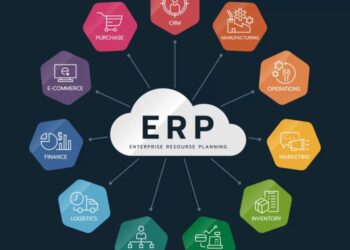Shopify ERP integration opens doors to a world of seamless business operations and enhanced efficiency. In this comprehensive guide, we delve into the intricate process of integrating ERP systems with Shopify, exploring the benefits, challenges, and best practices along the way.
As we navigate through the complexities of this integration, you'll gain valuable insights on how to optimize your business processes and drive growth through streamlined operations.
Overview of Shopify ERP integration
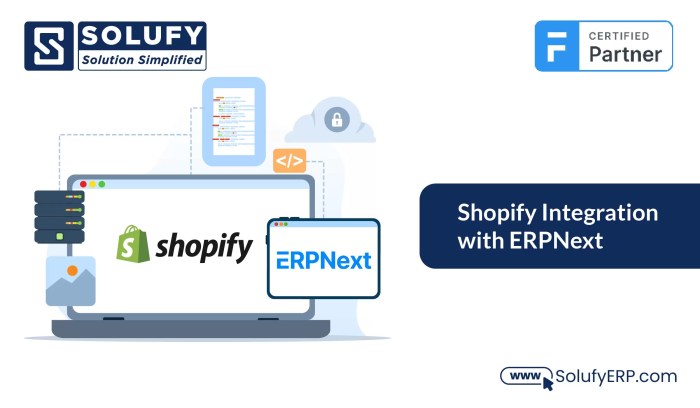
Integrating ERP systems with Shopify involves connecting the back-end processes of a business, such as inventory management, accounting, and customer relationship management, with the e-commerce platform of Shopify. This integration streamlines operations, improves efficiency, and provides a seamless experience for both businesses and customers.
Benefits of Shopify ERP integration
- Improved data accuracy: By integrating ERP systems with Shopify, businesses can ensure that data is consistent across all platforms, reducing errors and improving decision-making.
- Enhanced efficiency: Automation of processes such as order fulfillment, inventory management, and financial reporting can save time and resources for businesses.
- Better customer experience: With real-time access to inventory levels, order status, and customer information, businesses can provide faster and more personalized service to their customers.
Challenges in the integration process
- Complexity of systems: ERP systems and Shopify may have different data structures and requirements, making integration a challenging task that requires careful planning and expertise.
- Data migration issues: Transferring data from existing systems to the integrated platform can lead to data loss or corruption if not done correctly, causing disruptions in operations.
- Resource constraints: Implementing and maintaining an integrated system requires time, money, and skilled personnel, which may pose challenges for small businesses with limited resources.
Choosing the right ERP system for Shopify
When it comes to integrating an ERP system with Shopify, selecting the right one is crucial for the smooth operation of your business. Here, we will compare different ERP systems available for integration with Shopify, identify key features to look for when selecting an ERP system, and discuss compatibility requirements between Shopify and ERP systems.
Comparison of ERP systems
- NetSuite: A cloud-based ERP system that offers comprehensive features for inventory management, financials, and order processing.
- SAP Business One: Known for its scalability and robust reporting capabilities, suitable for mid-sized businesses.
- Microsoft Dynamics 365: Offers seamless integration with Shopify, providing advanced analytics and customer insights.
Key features to consider
- Integration capabilities: Ensure the ERP system can seamlessly connect with Shopify to sync data in real-time.
- Scalability: Choose an ERP system that can grow with your business and accommodate increased data volume.
- Customization options: Look for an ERP system that allows customization to meet your specific business needs.
Compatibility requirements
- API support: Verify that the ERP system has robust API support to facilitate smooth integration with Shopify.
- Data synchronization: Ensure that data synchronization between Shopify and the ERP system is efficient and accurate.
- Security measures: Prioritize an ERP system that adheres to security standards to protect sensitive business data.
Steps to integrate ERP with Shopify
Integrating an ERP system with Shopify involves a series of steps to ensure a seamless connection between the two platforms. Below is a detailed guide on how to successfully integrate ERP with Shopify.
Data Synchronization Between ERP and Shopify
To ensure smooth integration, it is crucial to establish effective data synchronization between the ERP system and Shopify. This involves mapping out the data fields that need to be synchronized and setting up automated processes for data transfer. By syncing customer information, inventory data, orders, and other relevant data points, businesses can streamline operations and enhance efficiency.
Best Practices for a Seamless Integration Experience
- Conduct a thorough analysis of your business requirements and choose an ERP system that aligns with your needs and goals.
- Collaborate closely with your ERP provider and Shopify experts to develop a customized integration plan.
- Test the integration process in a controlled environment before going live to identify and resolve any potential issues.
- Train your team on how to use the integrated system effectively and provide ongoing support for any technical challenges.
- Monitor the performance of the integrated system regularly and make necessary adjustments to optimize efficiency.
Impact on business operations
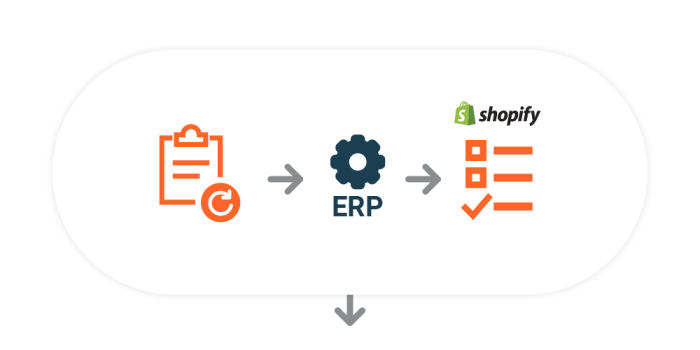
Integrating Shopify with an ERP system can have a significant impact on streamlining business operations, improving efficiency, and boosting productivity. By automating various processes and centralizing data, businesses can experience a range of benefits that can ultimately lead to increased sales and customer satisfaction.
Improved efficiency and productivity
- Automated order processing and inventory management can reduce manual errors and save time.
- Real-time data synchronization between Shopify and ERP can eliminate data discrepancies and ensure accurate information across all systems.
- Streamlined workflows and access to integrated data can enhance decision-making processes and operational efficiency.
- Integration of customer data can enable personalized marketing strategies and improve customer engagement.
Potential for increased sales and customer satisfaction
- Efficient order fulfillment and inventory management can lead to faster delivery times and improved customer satisfaction.
- Access to real-time insights and analytics can help businesses identify trends, optimize pricing strategies, and enhance overall sales performance.
- Personalized marketing campaigns based on integrated customer data can result in higher conversion rates and customer loyalty.
- Improved visibility into customer interactions and purchase history can enable better customer service and support.
Common pitfalls to avoid
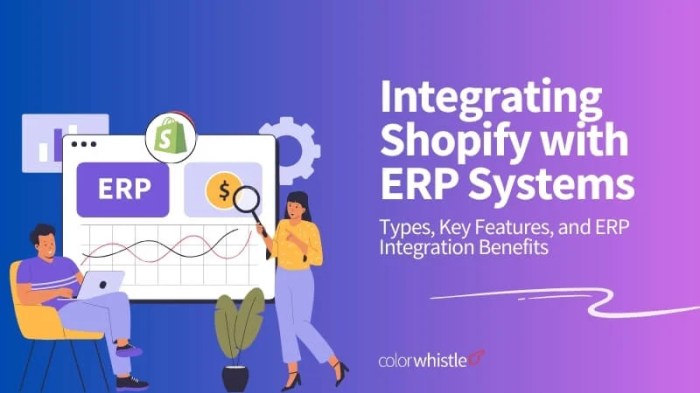
During the Shopify ERP integration process, there are some common pitfalls that businesses should be aware of to prevent any issues or data discrepancies. By understanding these pitfalls and following best practices, businesses can ensure a smooth integration process.
Lack of Proper Planning
- One common pitfall is the lack of proper planning before starting the integration process. Without a clear roadmap and timeline in place, businesses may face delays, miscommunication, and errors during integration.
- To avoid this pitfall, it is essential to create a detailed plan outlining the integration steps, assigning responsibilities to team members, and setting realistic timelines for each phase of the integration.
Insufficient Data Mapping
- Another common mistake is insufficient data mapping between the ERP system and Shopify. Without proper mapping of data fields, businesses may encounter issues with data accuracy and consistency.
- To prevent this pitfall, businesses should invest time in mapping out data fields from the ERP system to Shopify, ensuring that all necessary information is accurately transferred between the two platforms.
Lack of Testing and Training
- Failure to conduct thorough testing and provide adequate training to staff members can also lead to integration failures. Without proper testing, businesses may overlook critical issues that could impact operations.
- It is crucial to test the integration thoroughly before going live, and provide training to employees on how to use the integrated system effectively to avoid any disruptions in daily operations.
Final Review
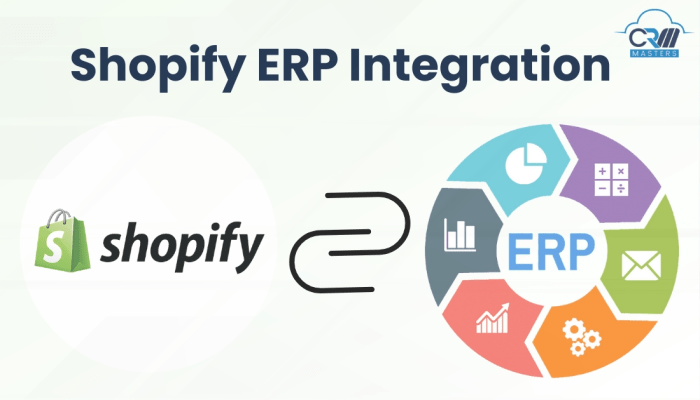
From streamlining business operations to boosting sales and customer satisfaction, the impact of Shopify ERP integration is profound. As you embark on this journey towards digital transformation, remember that the key to success lies in careful planning, seamless execution, and a deep understanding of the synergies between ERP systems and Shopify.
Query Resolution
What are the key benefits of Shopify ERP integration?
Shopify ERP integration can lead to enhanced efficiency, streamlined processes, improved data accuracy, and better decision-making capabilities.
How can businesses prevent common pitfalls during integration?
By conducting thorough compatibility checks, investing in proper training for employees, and regularly monitoring data synchronization, businesses can avoid common pitfalls during Shopify ERP integration.
What are the best practices for a seamless integration experience?
Some best practices include setting clear objectives, involving key stakeholders from the beginning, conducting thorough testing before full implementation, and ensuring ongoing support and maintenance post-integration.

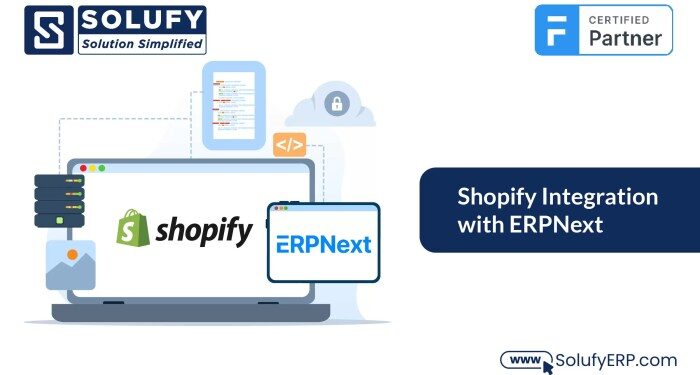






![Best Construction ERP Software [2024 Edition]](https://health.bandungnews.id/wp-content/uploads/2025/10/Top-10-Best-Construction-ERP-Software-to-Use-in-2024-1-120x86.jpg)


